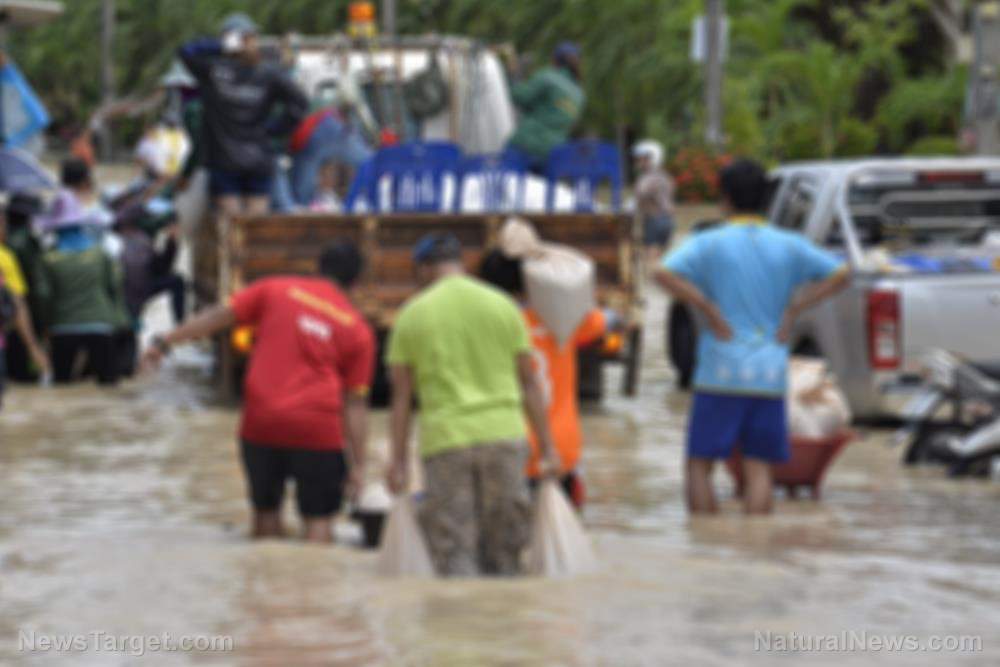It pays to stay ahead of the game: How to prepare for common SHTF scenarios
05/08/2019 / By Zoey Sky

Before SHTF, it’s ideal to have an emergency plan for your whole family. Don’t wait until it’s too late to set aside supplies and gear. (h/t to ThePreppingGuide.com)
Common SHTF scenarios
Prepare for both natural and personal disasters so you can cover all bases. Use your foresight and situational awareness when assessing your options for your various preps.
Natural disasters
The scenarios you prepare for may depend on your location, especially if you live in an area that’s prone to certain natural disasters. Consider scenarios like an earthquake, hurricane, or a wildfire. (Related: Which SHTF situation is most likely to actually happen?)
When the grid goes down
An EMP attack or a natural disaster may cause the partial or complete grid to go down. Prepare backup energy sources so you can stay warm during winter or cool during summer.
Economic collapse
Take the necessary precautions so your family is provided for should the economy collapse. Settle your finances and stockpile food and water supplies.
Nuclear war or other attacks
The world is unstable and whether you’re worried about a nuclear war or a cyber attack, it’s likely that at least one of these events will happen in your lifetime.
You can also experience personal SHTF scenarios, such as unemployment. This may have devastating effects, especially if your family relies on your income. Set aside some emergency funding and food to prepare for this scenario.
Tips for bugging in
Deciding to stay in your home when SHTF is called bugging in. Consider bugging in if the scenario seems like it’s going to be short-lived, especially if you have kids that might have trouble if you decide to go outdoors.
Here are a few more scenarios to consider.
- You don’t have a safe destination in mind.
- People tend to panic when SHTF, especially when they’re not prepared. Others might resort to violence, but you can stay safe in a fortified home.
- When you’re on the road during an emergency, you’ll be an easier target.
How to fortify your home when bugging in
When you’re bugging in, you don’t have to worry about finding shelter. However, you still need to make preparations so your home can survive when SHTF.
- Store enough water. You’ll need one gallon per day per person stored. Set aside enough water for at least one week or longer.
- Have a backup water source. Can you go to a nearby spring? Do you have a water collection system?
- Keep your food pantry stocked. If you’re bugging in, include staples like beans, grains, oatmeal, pasta, and rice. You’ll also need items like canned foods, dried fruits, spices, sugar, and comfort items for your family.
- Set up heating sources. Make sure you have backups in case you lose power.
- Fortify your home. Board up your doors and windows if you need to, and arm yourself to protect your loved ones.
Tips for bugging out
If you need to evacuate your home, this SHTF scenario is called bugging out. When facing these scenarios, consider bugging out to keep your family safe:
- Natural disasters, like hurricanes or a massive wildfire.
- If the transportation system is shut down.
- When your stockpile is nearly depleted.
Bug out locations (BOL)
If you don’t have a plan set up, here are some things to consider when deciding on a BOL.
- Keep your BOL a secret.
- Head somewhere other people won’t go.
- Find a location with a nearby water source and land to grow your own crops.
- Your BOL should be at least 10 to 20 miles away from civilization so you can get additional supplies or contact the outside world.
Bug out supplies
If you’re bugging out, you should keep your bug-out bags (BOBs) as light as possible. Bring only what you need, such as the items in the list below.
- Duct tape
- Dust mask
- Emergency blankets
- Extra clothes
- Firestarters
- First aid kit and necessary medications
- Food (e.g., nuts, protein bars, freeze-dried food, high-calorie items)
- Hand-crank radio
- Knife
- Multi-function tool
- Rope
- Tent
- Water and water filtration methods
SHTF plan steps
If you don’t have an emergency plan yet, follow the steps detailed below.
1. Plan for an emergency before it happens.
Start buying and storing supplies and gear now. Pack your BOBs and inform the whole family about your plan for different scenarios.
2. Stay informed.
Monitor the news and get as much information about what happened. Keep an emergency radio so that you can listen to the news, or learn how to use ham radios.
3. Get in touch with family and friends.
Reach out to your family and friends. If you can trust them, inform them of your SHTF plans ahead of time.
If your immediate family members are outside when disaster strikes, you need a way to get in touch. Decide on a designated meeting point and a secondary one. You may need it if the first gets compromised.
4. Prepare before your bug in or bug out.
Weigh your choices, then fortify your home if you’re bugging in. If you’re bugging out, head for a secure BOL.
5. Determine how long your supplies will last.
Once you fortify your home, take inventory of your supplies, gear, and skills. Check your inventory to plan how long you can stretch your meals, and get more food if you need to.
6. Get books on survival skills.
You’ll need books on crucial skills like firestarting, how to filter water, etc. You can also brush up on your skills by practicing and watching video guides online.
7. Make your plan flexible.
An SHTF plan must be flexible since things will rarely go as planned.
Prepare your SHTF plan now so you can be ready before disaster strikes.
Sources include:
Tagged Under: bug out, Collapse, disaster, emergency, natural disasters, off grid, preparedness, prepper, prepping, safety, self-defense, self-reliance, SHTF, survival, survival gear, survival supplies, survival tools, survivalist, weapons



















